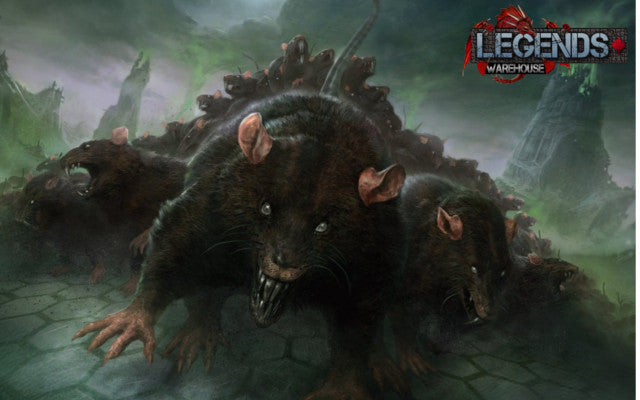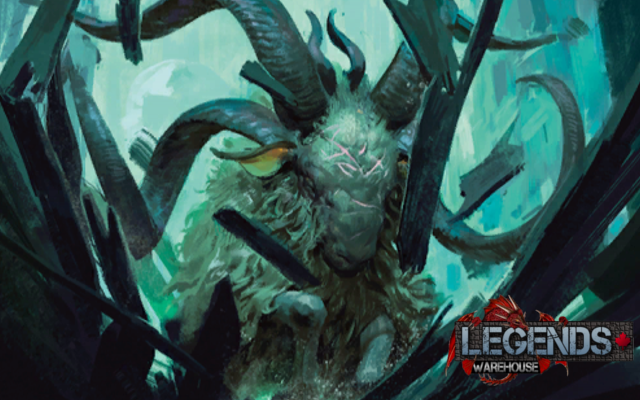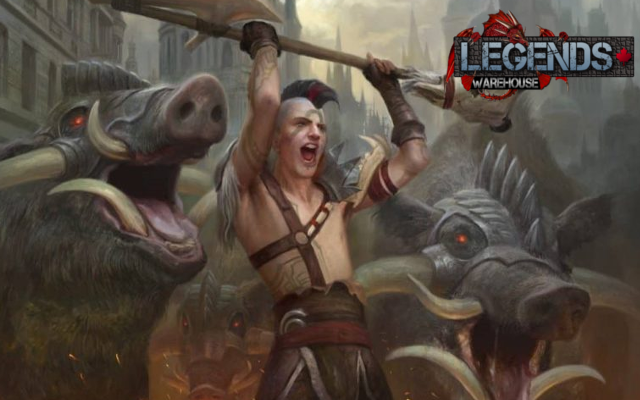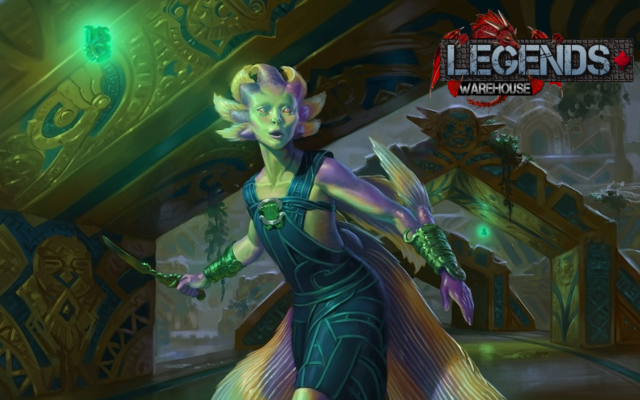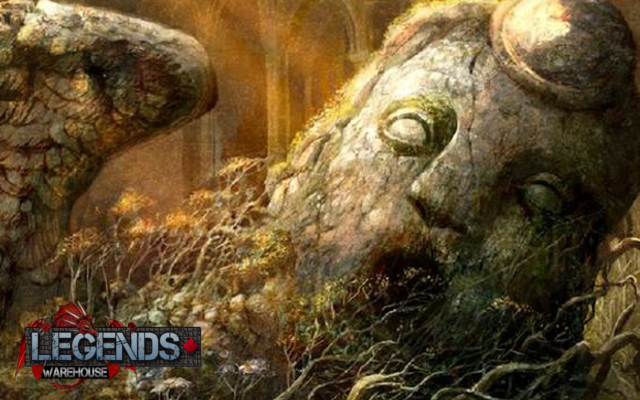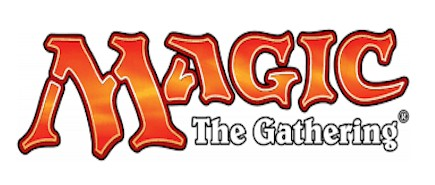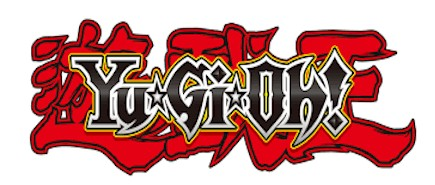Shifting Gears: Masters 25 and Pauper
- Legends Warehouse News
- 13 Mar, 2018
Masters 25 is the best Masters set for Pauper players. It sounds like a bold statement, but compared to previous Masters releases, no other set has given fans of commons this much love. This set features some much-needed reprints of Modern-era Pauper staples in Utopia Sprawl, Street Wraith, and Simian Spirit Guide, and while they are uncommon in the set, this influx of cards is welcome to anyone looking to play some unfair Magic. Where this set really shows the Pauper love is in the multitude of cards downshifted in rarity to common. This follows the trend of previous Masters sets by shifting former rares and uncommons down to Pauper status, but up until now we had never seen so many cards that were actually playable get moved like this.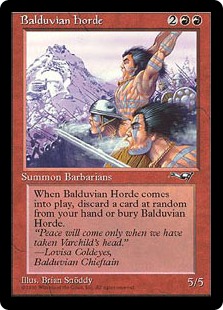
One of the biggest downshifts that surprised nearly everyone was Balduvian Horde. The Horde was a flagship card in Alliances, selling for well over $25 in a time where that was unheard of. It was heralded as the second coming of Juzam Djinn, and back then people were trading away sets of Force of Will for just a single copy! And then, after all that hype, the card did....barely anything. It turns out that losing one life a turn with Juzam Djinn was better than randomly discarding a card, especially when you could power out your threat early with Dark Ritual. While it makes sense to include it in Masters 25, including it at common was mind boggling. However, given the relative size of most threats in Pauper, I feel like this could carve out a solid niche in aggressive Red decks. As Gurmag Angler has taught us time and again, a cheap 5/5 can be very difficult to get rid of, and when at the top of an aggro curve that could potentially take advantage of the discard through the madness mechanic we could see a pretty solid home for Balduvian Horde.

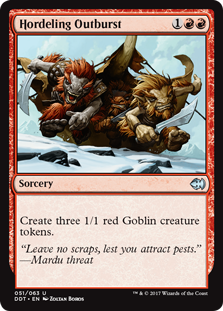
Speaking of Red aggro decks, Goblins has seen the occasional play due to their ability to go wide around blockers, but they lacked the interactivity of their Modern and Legacy counterparts due to many of their tricks being at uncommon and rare. Frenzied Goblin is one of the more powerful effects for aggro decks looking to mess with the opponent’s blockers, and now that it’s been shifted to common, Pauper Goblins now has some sense of flexibility in mucking up combat math. Also, with Hordeling Outburst getting downshifted, the deck has even more means of going wide as well as fueling Goblin Sledder and Mogg Raider, thus giving it even more resilience against spot removal-heavy decks.
The last major downshift Red received was Pillage. Formerly an uncommon, Pillage gives you the versatility of either being a land destruction card or an artifact destruction card. This lets it fit right into a sort of Ponza shell when coupled with Utopia Sprawl, Stone Rain, Mwonvuli Acid-Moss, and Thermokarst. This way you can keep your opponent off of mana while chipping away at their life total with Roiling Terrain and Mold Shamblers. Pillage has the added ability of hitting artifacts, so it has an advantage over these other options against Affinity, Boros Metalcraft, and Tron. There have already been Sultai variants of this style of deck, so there’s a precedent for this strategy working, and streamlining it down to two colours would take away some of the variance in the manabase.
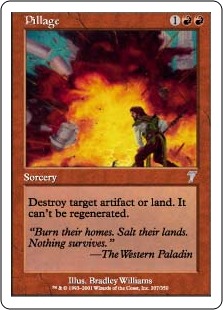
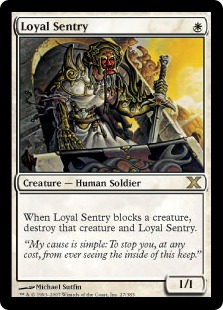
White decks got a really interesting addition in Masters 25 in Loyal Sentry. This was previously a rare in 10th Edition and Starter 1999, so for it to be downshifted to a common was weird. However, this card gives White decks some serious defensive bolstering against archetypes that go tall, such as Bogles and Heroic. When Loyal Sentry blocks a creature, both it and that creature are destroyed. No lifelink happens, no trample goes through. Once it’s blocked by Loyal Sentry, that creature is going to die. This also gives White decks a means of stopping Gurmag Angler and the 4/4 creatures in Affinity from out-muscling them, which is something that has plagued White for quite some time. While it is unfortunate that you lose the Sentry, I could easily see it getting splashed into an Abzan Tortured Existence shell to constantly bring Sentry back to the battlefield.
Another powerful White creature that got downshifted is Fencing Ace, a former uncommon from Return to Ravnica that saw a fair amount of play in the old Bant Hexproof deck in Standard, as well as terrorizing many a draft pod. A 1/1 double strike doesn’t sound like much on the surface, but given the power of the auras Bogles frequently uses, such as Armadillo Cloak and Ancestral Mask, that double strike can get out of hand very quickly. It may not be as resilient as Slippery Bogle, but I can see it being a solid sideboard card for when they take out all of their spot removal.
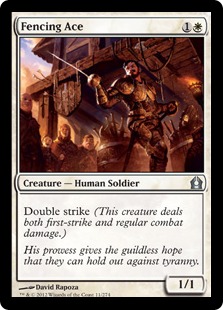
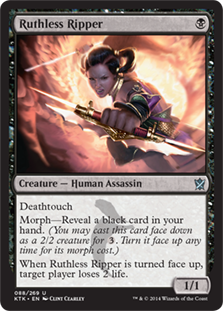
Black decks have traditionally been skewed toward the midrange and control shells due to the overwhelming amount of removal and the end game of Gray Merchant of Asphodel, but for more aggressive decks, Ruthless Ripper is a welcome addition. Back when morph was all the rage, this was one of the more dangerous combat tricks. As one of the few morph creatures you could flip for no mana, you could play it on turn 3, block a larger threat, then flip it right away. The opponent would lose two life when it flipped, then since Ripper has deathtouch, it would destroy the larger threat. While I doubt how often people will walk into it since morph creatures aren’t all that popular, Ruthless Ripper is definitely a helpful tool for aggressive Black decks as both a combat trick and a deterrent for opposing attackers.
Finally, what do you think when you hear the words “You can have any number of a card in a deck”? If you’re like me, Relentless Rats is an absolutely stunning  addition to the Pauper metagame for two reasons: 1) Pauper is typically a format of incremental advantages, and Relentless Rats building each other up can easily overwhelm other archetypes, and 2) you’re going to have to buy so, so many copies of this card. After some number crunching, the ideal number of copies for a Pauper Relentless Rats deck is between 37-39 copies. You’re looking at 17 Swamps, a set of Dark Ritual to get the ball rolling on turn 1, and the rest are Rats with potentially a couple copies of Unearth to reuse your Rats after they’re destroyed. This is a deck designed to tax removal as you will almost certainly have more threats than they have answers, and even damage-based sweepers like Pestilence get outclassed fairly quickly. Where this deck would falter is against faster decks that could ignore it, such as Elves and Izzet Blitz, due to how few ways of interacting it would have, but against slower decks I can see Relentless Rats overpowering them through sheer numbers.
addition to the Pauper metagame for two reasons: 1) Pauper is typically a format of incremental advantages, and Relentless Rats building each other up can easily overwhelm other archetypes, and 2) you’re going to have to buy so, so many copies of this card. After some number crunching, the ideal number of copies for a Pauper Relentless Rats deck is between 37-39 copies. You’re looking at 17 Swamps, a set of Dark Ritual to get the ball rolling on turn 1, and the rest are Rats with potentially a couple copies of Unearth to reuse your Rats after they’re destroyed. This is a deck designed to tax removal as you will almost certainly have more threats than they have answers, and even damage-based sweepers like Pestilence get outclassed fairly quickly. Where this deck would falter is against faster decks that could ignore it, such as Elves and Izzet Blitz, due to how few ways of interacting it would have, but against slower decks I can see Relentless Rats overpowering them through sheer numbers.
Masters 25 is an incredible set for Pauper players, with more than enough reprints and new introductions to build tons of decks. I’m already looking to add Ponza and Rats to my Pauper gauntlet, and several of these new cards will already have homes in the decks already there, such as Loyal Sentry in Bogles. I expect the integration of these cards into the format to be slow at first, but eventually these will prove to be heavy hitters and cement their place in their respective archetypes. I’m excited to see how the format evolves after this set, and I have a feeling that Masters 25 will be huge for established Pauper players and newer entrants alike.


